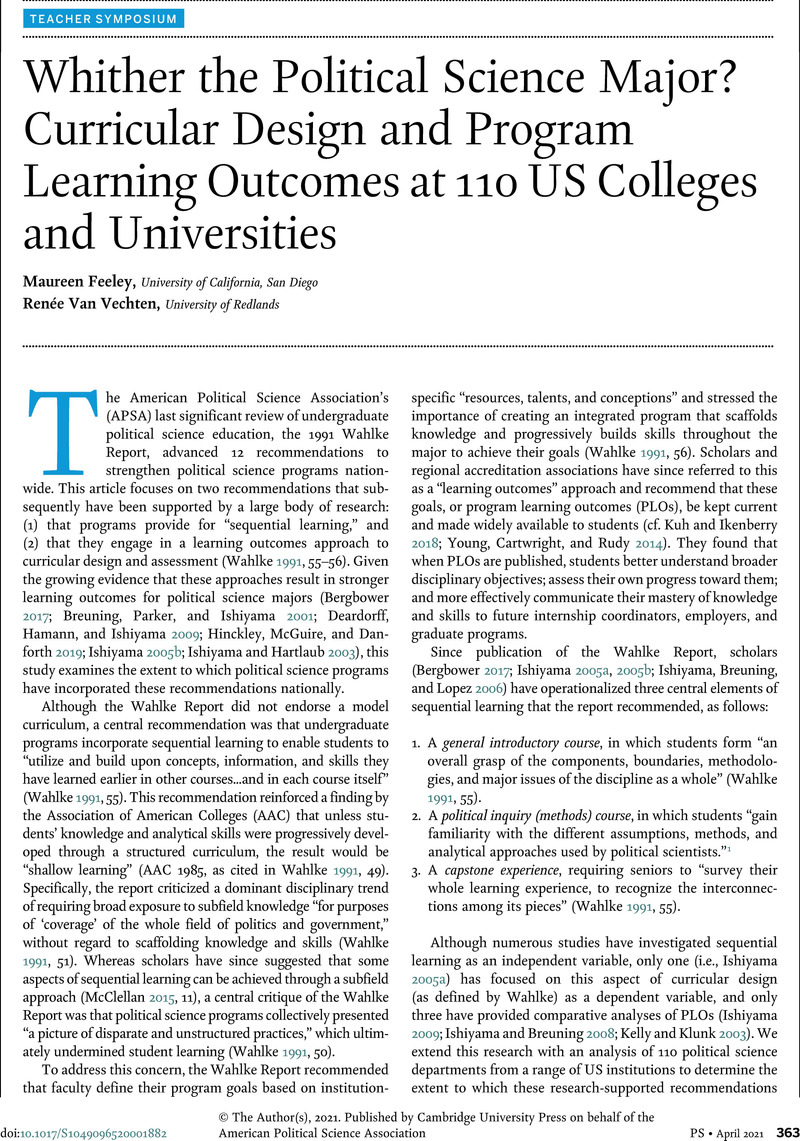Crossref Citations
This article has been cited by the following publications. This list is generated based on data provided by Crossref.
Best, Eric
and
Mallinson, Daniel J.
2023.
Quantitative Political Science Education in the Past and Future.
Journal of Political Science Education,
p.
1.
McClellan, E. Fletcher
Kopko, Kyle C.
and
Hafler, Amanda
2023.
Giving It the Old College Try: Academic Departments and Undergraduate Curriculum Change in Political Science, 2009–2019.
Journal of Political Science Education,
Vol. 19,
Issue. 4,
p.
580.





